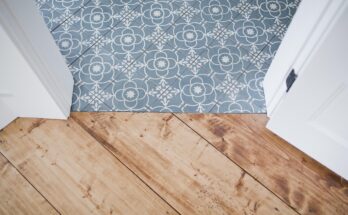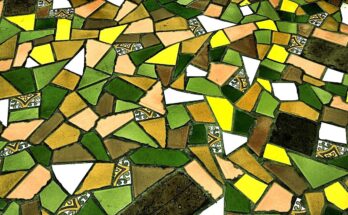ZonaJakarta – Vinyl flooring has earned its place as a favorite in homes, shops, and rentals alike. It’s affordable, easy to install, and impressively durable. Plus, it comes in just about every style you can imagine—from wood-look planks to stone-inspired tiles—offering homeowners the chance to get the look they want without the high cost of real hardwood or stone.
But just because vinyl flooring is low-maintenance doesn’t mean it’s no-maintenance. Like any surface under your feet every day, it still needs regular care to keep it looking its best. The good news? It doesn’t take much—just some basic upkeep, smart habits, and a little know-how.
Here’s a practical and detailed guide to keeping your vinyl flooring clean, strong, and stylish for the long haul.
Sweep or Vacuum Often—Even When It Doesn’t Look Dirty
Vinyl flooring is excellent at hiding dirt, which is both a blessing and a trap. Just because it doesn’t look dirty doesn’t mean it’s not collecting dust and grit. Over time, tiny particles can act like sandpaper, slowly wearing down the top layer of the flooring.
The fix is simple: sweep or vacuum regularly. A soft-bristled broom or a vacuum with a hard floor setting works great. Avoid vacuums with beater bars or rotating brushes, which can scratch or scuff the surface, especially on luxury vinyl tiles (LVT) or planks (LVP).
If you have pets or live in a high-traffic area, doing this every other day will help keep the floor from looking dull or tired over time.
Mop with Care—Not with Buckets of Water
Vinyl is water-resistant, which makes it a solid choice for kitchens, bathrooms, and laundry rooms. But it’s not totally waterproof—especially around the seams and edges. So while you can mop it, you shouldn’t overdo it with water.
Skip the bucket-and-sopping-mop routine. Instead, use a damp (not dripping wet) microfiber mop or sponge mop. For most routine cleanings, plain warm water or a mix of water with a small splash of mild dish soap is enough.
If you want to use a floor cleaner, check that it’s vinyl-safe. Harsh chemicals, bleach, ammonia, or anything abrasive can strip away the wear layer or cause discoloration. And definitely steer clear of steam mops—the intense heat and moisture can break down the adhesive and cause vinyl planks to lift or curl over time.
After mopping, it’s a good idea to dry the floor with a soft towel or let it air dry fully before walking across it.
Wipe Up Spills Immediately
One of vinyl’s biggest selling points is that it handles spills better than most flooring types. Still, that doesn’t mean you should let liquids sit.
Water, juice, oil, or any household liquid left on the surface can seep into seams or edges and potentially damage the adhesive underneath—or stain the top layer if it’s not cleaned soon enough.
Blot spills with a soft cloth or paper towel right away. For sticky messes, a quick wipe with a damp cloth and a little soap does the trick. Always follow up by drying the area, especially around the corners and edges.
If your vinyl floor is textured (to mimic wood grain or stone), use a soft-bristled brush for stubborn grime, but be gentle—too much scrubbing can wear out the protective layer.
Protect It from Scratches and Dents
While vinyl is more forgiving than wood or tile when it comes to impact, it’s not invincible. Heavy furniture, dragged chairs, or dropped tools can still leave marks, dents, or even punctures if you’re not careful.
To prevent this, apply felt pads under furniture legs and replace them if they wear down or get dirty. For rolling chairs, consider using a plastic floor mat. If you’re moving something heavy—like a fridge or sofa—always lift or use sliders, never drag.
In high-traffic spots, runners or rugs can also help take the edge off daily wear. Just make sure any rugs you use have non-staining backings. Some rubber or latex rug pads can react with vinyl and leave behind permanent marks.
Keep an Eye on Direct Sunlight
It’s easy to overlook, but sunlight can slowly fade or discolor vinyl flooring over time—especially near windows, glass doors, or skylights. While many modern vinyl floors are UV-resistant, prolonged exposure to direct sun can still cause the color to shift unevenly.
To protect your floors, consider using sheer curtains or blinds during peak daylight hours. Window film that blocks UV rays is another smart option, especially if you have large windows and want to keep the natural light without fading your floors.
And don’t forget to rotate rugs and furniture every so often. That helps the color age more evenly, avoiding stark contrast lines between exposed and shaded areas.
Stay Away from Wax, Polish, or Oil-Based Cleaners
Vinyl flooring has a factory-applied finish that gives it its sheen, durability, and resistance to scuffs. That top layer is what makes it so easy to clean—and why you shouldn’t try to “improve” it with wax or polish.
Old-school floor wax or oil-based polishes will just sit on top of the vinyl and create a sticky or cloudy mess. They don’t absorb into the surface the way they would with real hardwood. Instead of giving your floor more shine, they can actually dull the look and make it harder to clean.
If your vinyl floor starts to lose its luster, it may be time for a deeper clean with a manufacturer-recommended product—or in some cases, a light reapplication of protective finish by a pro (if your floor supports that). But avoid DIY shine-boosters unless they’re made specifically for vinyl.
Know the Difference Between Cleaning and Repair
Vinyl’s a tough customer, but if it does get damaged—say, from a dropped knife or heavy furniture—it can’t really be “patched” the same way as wood. Minor surface scratches can sometimes be masked with a vinyl repair kit or color-matching pen. But deeper gouges or tears usually mean replacing a section of flooring.
Luckily, most vinyl flooring (especially click-and-lock or loose lay types) allows for plank or tile replacement without tearing up the whole room. If you kept leftover pieces from the original installation, you’re already ahead of the game.
If you’re unsure whether damage can be fixed or if replacement is the best route, talk to a flooring expert. A professional can usually swap out a section without much disruption, and in many cases, the repair is nearly invisible.
Final Thought: Easy Upkeep, Long Life
Vinyl flooring is popular for a reason—it’s one of the easiest surfaces to care for in a busy home. Whether you’re dealing with pets, kids, daily foot traffic, or just want something stylish and stress-free, vinyl delivers. But it still needs a bit of attention to keep it in good shape.
Sweep often. Mop lightly. Skip the harsh stuff. Wipe spills fast. And don’t drag furniture. That’s really all there is to it.
With these habits in place, your vinyl flooring will stay smooth, clean, and picture-perfect—not just for months, but for years. And that’s a pretty good deal for a floor that asks so little in return. (*)




